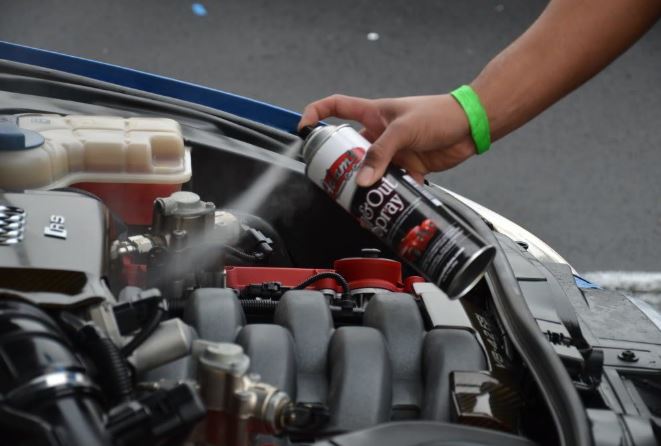Car Engine Cleaning by Spray – A Complete Guide for Car Owners
When it comes to car maintenance, many drivers focus on things like oil changes, tire rotations, and brake checks. However, one often overlooked aspect of car care is the engine itself. A clean engine not only looks better but can also enhance your vehicle’s performance. One of the easiest and most effective ways to clean your engine is by using a spray specifically designed for engine cleaning. In this guide, we’ll walk you through everything you need to know about car engine cleaning by spray – why it’s important, how to do it, and the best practices to follow.
What Is Car Engine Cleaning by Spray?
Car engine cleaning by spray involves using a specialized cleaning product, usually in an aerosol or liquid form, to clean the engine compartment of your vehicle. This method is designed to remove grease, dirt, oil, and other contaminants from engine parts without causing damage. It’s an easy and cost-effective way to keep your engine running smoothly and looking great.
Why Is Car Engine Cleaning Important?
Over time, the engine compartment accumulates dirt, grease, oil, and road debris. While this buildup may not directly affect your car’s performance, it can lead to several problems:
-
Overheating: Dirt and grease can obstruct airflow around the engine, causing it to overheat. A clean engine allows for better cooling and can help prevent overheating issues.
-
Corrosion Prevention: Oil and grease can cause corrosion on metal parts of the engine if left unchecked. Cleaning the engine helps prevent rust and extends the lifespan of critical components.
-
Enhanced Performance: A clean engine runs more efficiently. Debris buildup can reduce the efficiency of engine components like belts, hoses, and electrical connections.
-
Aesthetic Appeal: While not directly related to performance, a clean engine compartment simply looks better, especially if you’re selling the car or showing it off at a car meet.
How Does Car Engine Cleaning by Spray Work?
Car engine cleaning sprays are typically designed to break down grease and grime without damaging sensitive parts of your engine. These sprays are often water-based or solvent-based and come with instructions for proper use.
Here’s how the process works:
-
Application: The cleaning spray is applied directly to the engine, focusing on areas where dirt and grease have accumulated.
-
Reaction: The chemicals in the spray begin to break down grease, oil, and dirt. Some sprays are formulated to dissolve tougher grime and allow it to be wiped or rinsed away.
-
Rinsing (if necessary): Some sprays are meant to be wiped off with a clean cloth, while others may require you to rinse the engine with water. It’s essential to follow the manufacturer’s instructions to avoid damaging electrical components.
Step-by-Step Guide for Car Engine Cleaning by Spray
Now that you understand the importance of cleaning your engine, let’s break down the steps for using engine cleaning spray effectively.
Step 1: Gather the Necessary Supplies
Before you begin, make sure you have the following items:
-
Engine cleaning spray (ensure it’s designed for use on car engines)
-
A plastic sheet or tarp to protect the surrounding areas
-
Water (if required for rinsing)
-
Clean cloth or sponge
-
Gloves and protective eyewear
-
Plastic bags or wraps for electrical components
Step 2: Prepare Your Vehicle
-
Turn off the engine: Make sure your car engine is completely off and cool before starting the cleaning process. Cleaning a hot engine can cause damage.
-
Cover sensitive components: Use plastic bags or wraps to cover electrical parts, air intake systems, and other components that shouldn’t get wet.
-
Position your car: Ensure your vehicle is parked on a flat, level surface and the hood is open to give you access to the engine compartment.
Step 3: Apply the Cleaning Spray
-
Shake the can of engine cleaning spray well before use.
-
Spray the cleaner generously on the engine, focusing on areas with heavy grease buildup.
-
Allow the cleaner to sit for the amount of time recommended on the product label (usually 5-10 minutes). This gives the cleaner time to break down the dirt and grease.
Step 4: Scrub and Wipe
-
Use a clean cloth or sponge to gently scrub any stubborn spots. Be careful around sensitive components, like wires and connectors.
-
Wipe off any excess spray and loosened debris.
Step 5: Rinse (if Necessary)
If your engine cleaner requires rinsing, use a hose with low pressure to rinse off the cleaner. Make sure not to directly spray electrical components or components sensitive to water.
Step 6: Dry the Engine
-
After cleaning and rinsing, use a clean towel or cloth to dry the engine. This prevents water from sitting in the engine compartment, which could lead to rust or corrosion.
Step 7: Recheck and Remove Covers
Once your engine is dry, remove any plastic covers you placed around sensitive parts. Check that all components are dry and free of cleaning residue.
Best Practices for Car Engine Cleaning by Spray
-
Use the Right Cleaner: Not all cleaners are made equal. Ensure you choose a spray specifically designed for engine cleaning to avoid damaging components. Opt for a non-toxic, biodegradable cleaner if possible.
-
Avoid Direct Contact with Electrical Parts: Never spray cleaner directly onto electrical components, such as the battery terminals, sensors, or wires. These components can easily be damaged by water or cleaning chemicals.
-
Don’t Over-Spray: It’s easy to get carried away with spraying the cleaner, but a little goes a long way. Over-spraying can lead to excess residue that may be difficult to clean off.
-
Regular Maintenance: Engine cleaning should be done as part of regular car maintenance, ideally every 3 to 6 months, depending on how dirty your engine gets. Doing this regularly helps maintain your vehicle’s overall health.
When Should You Clean Your Car Engine?
While it’s a good idea to clean your engine periodically, it’s essential not to overdo it. Here are some signs that it’s time to clean your engine:
-
The engine is running hotter than usual.
-
You notice an excessive amount of grease or dirt buildup.
-
You’re preparing to sell or show off your vehicle, and you want it to look as pristine as possible.
-
The engine is making strange noises or functioning poorly due to grime buildup on components.
Additional Tips for Vehicle Maintenance
In addition to cleaning your engine, consider other aspects of your vehicle’s maintenance to keep it running smoothly:
-
Battery Maintenance: Regularly check your battery’s health. If you need a replacement, check out our guide to new batteries.
-
Explore Financing Options: If you’re in the market for a new car, check out the Changan Deepal S07 EMI plan for affordable options.
-
Vehicle Listings: Interested in a new car? Check out the Changan Deepal S07 or the Changan Karvaan MPV Plus 12MPFI for your next purchase.
























